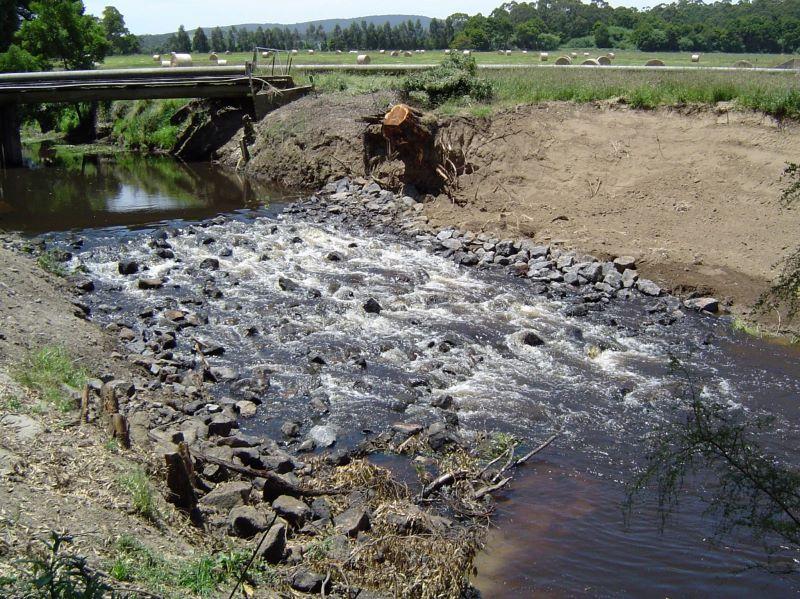There are numerous alternative methods to create fish passage. Each individual dam is analyzed in order to identify the optimal solution based on many factors, including but not limited to passage rates, historical significance, technical feasibility, public safety, environmental impact and cost.
Technical Fishways
Technical fishways, often referred to fish ladders, employ engineering designs with concrete, aluminum, polymer, and/or wood, with standardized dimensions, and using common construction techniques. There are three types of technical fishways that have the potential to be used to create passage past dams on the Brandywine.
Denil Ladder
A Denil fishway consists of a linear channel, with baffles arranged at regular and relatively short intervals, angled upstream against the flow. Each baffle has a cut-out section in the middle that creates a “tongue” of current that fish swim through.
Pool & Weir Ladders
A pool and weir fishway consists of a concrete channel leading from the headwater to the tailwater with a series of cross walls (weirs) that divide the channel into a succession of stepped pools.
Vertical Slot Ladders
Vertical slot fishways are a specialized type of pool-and-weir fishways. Generally, the opening in the weir is a vertically oriented slot, open from top to the bottom. Often, the lower portion of the slot is blocked with a sill block or baffle which helps control the water elevation in the adjoining upstream pool.

Nature Like Fishways
Nature like fishways (NLFs) are artificial instream structures that essentially convert a low-head dam into a long riffle/rapid that mimics natural conditions migrating fish can navigate. NLFs are usually constructed using natural material and result in hydraulic conditions and stream gradient that dissipate energy and provide efficient passage for migratory and resident fish. There are two basic types of NLF’s:
Full-width Rock Ramp Fishway
Generally, Rock Ramps consist of well-graded rock fill and rock weirs on a gradual slope that create a series of pools with velocities that enable fish to swim upstream over the dam. Rock Ramp foundations are routinely set on stable soil, or bedrock.
Bypass Channel
A Bypass Channel is a man-made channel that usually originates at the base of a dam, passes around an abutment, and proceeds upstream to a location where it rejoins the stream. Although the entrance and exit of a Bypass Channel are connected to the mainstream channel, the Bypass Channel itself is constructed outside the existing river channel and requires a substantial land area along the stream margin for installation.
Partial Dam Removal
One common approach to partial dam removal is breaching, which involves removing a full height section of a dam but leaving the rest of the dam intact. Breaching directs all or most of the stream flow through the removed section as opposed to over the remaining portion of the dam. Another approach to partial dam removal is notching, which requires cutting a vertical notch of sufficient size to create conditions that fish can pass through. Finally, partial removal also includes lowering a dam to a height that allows fish passage yet maintains water elevation upstream for specific needs such as a water intake.







